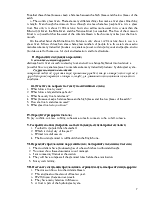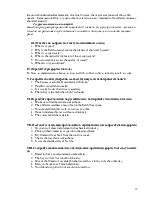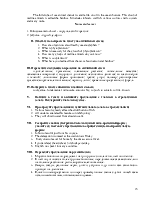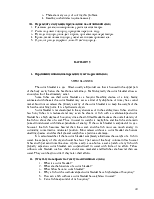

































Most fishes swim by moving the tail fin from side to side, thus generating forces that act on the water in such a way as to drive the body forward. The more active and streamlined the fish, the more effective is the tail fin as a propeller. In addition to the tail fin, other fins also play an important part in fish locomotion, and may, in fact, even be the chief propulsive organs. In general, the unpaired fins – that is, the dorsal and anal fins – control rolling and yawing movements, while the pared pectoral and pelvic fins are used in turning and braking. The pectorals may also be used to generate lift.
The maximum swimming speed for various bony fishes ranges from about 8 km. per hour for a small goby to 71 km. per hour for the bluefin tuna. In general, a fishes’ swimming speed is proportional to its body length – the longer the fish the faster it swims.
Notes on the text
1. Tapering off strongly toward the tail – сильно удлиняясь к хвосту
2. Slightly flattened at the sides – сильно сплюснута с боков
II. Ответьте на вопросы по тексту на английском языке:
1. How are most fishes shaped?
2. What does a fishes swimming style depend on?
4. How do most fishes swim?
5. What is the chief propulsive organ of fish?
6. What is the maximum swimming speed for various bony fishes?
III. Переведите следующие выражения на английский язык:
cоответствовать движению в воде; змеевидная форма; обтекаемая форма; сплюснутый с боков; удлиненная и плоская форма; главный орган движения; спинной плавник; хороший показатель скорости движения рыбы; песчаное дно; косные рыбы; непарные плавники, такие как спинной и анальный плавники ; размеры и строение плавников.
IV. Подберите в тексте синонимы к данным словам:
various, movement, spindle-shaped, spinal, to lie, role, mover, to produce, velocity
V. Найдите в тексте и выпишите предложения с глаголом в страдательном залоге. Подчеркните глагол сказуемое.
VI. Преобразуйте предложения из действительного залога в страдательный:
1. They told me the news today.
2. The manager will offer him a good job.
3. Many ships enter this port.
VII. Раскройте скобки, употребив глагол в нужной видовременной форме; укажите время; поставьте предложения в отрицательную и вопросительную формы:
VIII. Переведите предложения на русский язык:
1. Тела некоторых рыб сжаты с боков, другие рыбы имеют более удлиненную форму.
2. Камбалообразные имеют плоскую форму и плавают на одном боку.
3. Чем более обтекаемо тело рыбы, тем выше ее скорость передвижения в воде.
4. Скорость движения рыбы пропорциональна длине ее тела.
ВАРИАНТ 4
I. Перепишите и письменно переведите текст на русский язык:
MIGRATION AND FEEDING
Although most fishes spend their entire lives within a relatively circumscribe space, other species undertake migrations of greater or lesser distances. Migration is usually connected with breeding or feeding.
Outstanding examples of spawning migrations include salmon (Oncorhynchus and Salmo) – both Atlantic and Pacific species – that swim from the sea hundreds of miles up rivers and streams to spawn in the same places they were born, the relatively short migrations of herrings around the European coasts and the fantastic trek of European eels across 3000 miles (4,800 km) of the Atlantic Ocean to their spawning grounds in the Sargasso Sea. Many marine lampreys make spawning migrations into fresh waters and some tropical fishes undergo relatively short seasonal migrations from lakes and large rivers into temporary streams and freshets where conditions are more suitable for developing young.
Much is still to be learned about the way migrating fishes navigate
Уважаемый посетитель!
Чтобы распечатать файл, скачайте его (в формате Word).
Ссылка на скачивание - внизу страницы.